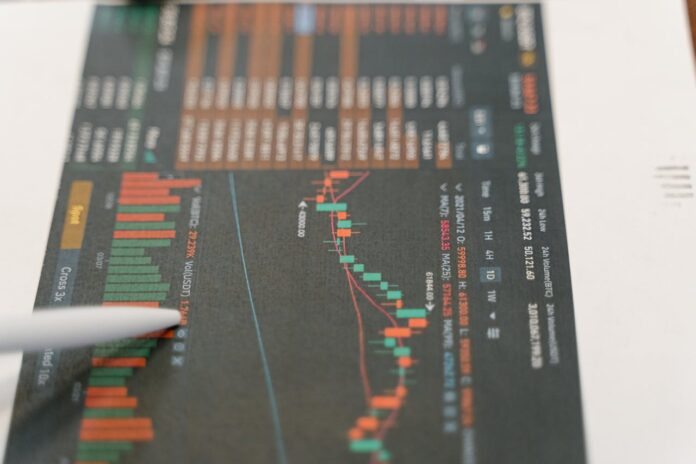Day trading can feel like taming a wild beast—thrilling yet unpredictable. The difference between a roaring success and a disastrous wipeout is knowing how to manage your exposure wisely.
Let’s explore how to keep your trades smart, your losses minimal, and your sanity intact.
Key Points:
- Limit exposure to less than 2% of your total capital per trade.
- Always have a stop-loss to safeguard your funds.
- Diversify your trades for better balance.
- Stick to a trading plan with clear goals.
- Control emotions to avoid impulsive decisions.
The Fine Line Between Calculated Risks and Gambling


Risk-taking is at the core of trading, but there’s a world of difference between taking calculated risks and outright gambling. Smart traders have a plan, use strategies, and manage exposure carefully.
Pro Tips for Calculated Risks:
- Know Your Maximum Loss: Define how much of your total capital you’re willing to lose in a single trade. Keep it under 2%.
- Practice First: Use platforms like Binomo to test strategies in demo accounts before committing real funds. All you need to start practicing is Binomo login.
- Avoid Revenge Trades: Chasing losses with impulsive trades only compounds the problem.
Practical Example:
If you have $5,000 in your account and decide to risk 2%, your maximum loss on any single trade should be $100. Stick to this rule no matter how tempting a trade may seem.
Why Every Trade Needs a Stop-Loss


A stop-loss is your safety net. It prevents a small mistake from snowballing into a catastrophic loss. Skipping a stop-loss is like driving without brakes—reckless and dangerous.
Benefits of Using Stop-Losses:
- Minimizes Losses: Caps your downside, so you never lose more than you can afford.
- Removes Emotion: Automates exits, preventing panic-based decisions.
- Protects Profits: Locks in gains by exiting positions if the market reverses.
Example Setup:
Let’s say you’re trading an asset priced at $50. You set a stop-loss at $48, limiting your loss to $2 per share. If the trade moves against you, your exit is automatic.
Diversification: Don’t Put All Your Eggs in One Basket
Diversifying your trades is essential for spreading risk. Concentrating on a single asset or sector can amplify losses when the market moves unfavorably.
How to Diversify Smartly:
- Trade Different Assets: Mix stocks, forex, and commodities.
- Balance Across Sectors: Avoid overexposure to any one industry.
- Use Multiple Strategies: Combine scalping, swing trading, and position trading for a well-rounded approach.
Key Benefits of Diversification:
- Reduces Exposure: Losses in one area can be offset by gains in another.
- Stabilizes Returns: Ensures smoother performance over time.
- Enhances Learning: Broadens your understanding of different markets.
The Emotional Rollercoaster of Trading


Trading isn’t just about numbers; it’s a mental game. Emotions like fear, greed, and FOMO can cloud judgment and lead to poor decisions.
Tips for Keeping Emotions in Check:
- Set Rules: Establish clear entry and exit rules to follow regardless of market noise.
- Take Breaks: Step away if you feel overwhelmed—emotional clarity is essential.
- Journal Your Trades: Record your trades and emotions to identify patterns and improve over time.
Relatable Analogy:
Think of trading like cooking. You need to follow the recipe (your plan) instead of letting your hunger (emotions) dictate impulsive decisions.
Building a Solid Risk-Reward Strategy
A strong risk-reward ratio is the cornerstone of a profitable trading plan. By aiming for higher rewards relative to your risks, you can stay ahead even with a few losing trades.
Steps to Develop a Risk-Reward Strategy:
- Define Your Ratio: Start with a 1:3 ratio, meaning you aim to make $3 for every $1 risked.
- Identify Entry and Exit Points: Use technical analysis to set realistic goals.
- Reassess Periodically: Adjust based on market conditions and personal performance.
Example:
If you risk $100 on a trade, set your profit target at $300. Over 10 trades, even if you lose six and win four, you still come out ahead with $200 in profit.
Histogram: Risk vs. Reward
| Risk ($) | Reward ($) |
| 100 | 300 |
| 200 | 600 |
| 300 | 900 |
This visual reinforces the importance of targeting higher rewards.
A Day in the Life of a Disciplined Trader
The key to trading success lies in having a routine that keeps you grounded. A structured day allows you to avoid over-trading and stick to your plan.
Recommended Routine:
- Morning: Analyze overnight market movements and identify potential opportunities.
- Midday: Execute trades based on your pre-defined plan—don’t chase the market.
- Evening: Review your performance, update your journal, and adjust your strategy as needed.
Key Benefits of a Routine:
- Consistency: Reduces impulsive trades.
- Focus: Keeps you aligned with your long-term goals.
- Improvement: Helps you learn from mistakes and refine your approach.
The Role of Capital Allocation in Risk Management
How you allocate your capital can significantly impact your trading longevity. Poor allocation is a recipe for disaster, while smart allocation keeps you in the game.
Practical Capital Allocation Tips:
- Separate Risk Capital: Only trade with money you can afford to lose.
- Divide Funds: Allocate percentages for high-, medium-, and low-risk trades.
- Keep Reserves: Always maintain a portion of your capital as a safety net.
Example Allocation:
If you have $10,000:
- High-risk trades: $2,000
- Medium-risk trades: $5,000
- Low-risk trades: $3,000
This balanced approach ensures you’re never overexposed.
Recognizing the Signs of Too Much Risk


Sometimes, traders take on more risk than they realize. Knowing the warning signs can save you from costly mistakes.
Signs You’re Taking on Too Much:
- Overleverage: Using borrowed funds excessively.
- Ignoring Stop-Losses: Letting losses run unchecked.
- Chasing Losses: Making bigger trades to recover losses.
Solutions:
- Scale back your positions.
- Stick to your pre-defined risk limits.
- Take a break and reassess your strategy.
Advanced Risk Mitigation Techniques
For seasoned traders, basic risk management strategies may not be enough. Advanced techniques provide additional layers of protection.
Techniques to Consider:
- Hedging: Offset potential losses by opening a counter-position in a correlated asset.
- Trailing Stop-Losses: Adjust stop-loss levels as prices move in your favor.
- Risk Parity: Allocate capital based on risk contributions of different assets.
Conclusion
Managing risk in day trading isn’t about avoiding it altogether—it’s about taking smart, calculated steps to protect your capital.
By using tools like stop-losses, diversifying trades, and keeping emotions in check, you can thrive in the market without unnecessary stress.
Remember, the goal isn’t to win every trade; it’s to ensure that when you lose, the impact is minimal.
Trading is as much about discipline as it is about strategy, and by sticking to proven risk management practices, you can turn challenges into opportunities and stay ahead of the curve.







